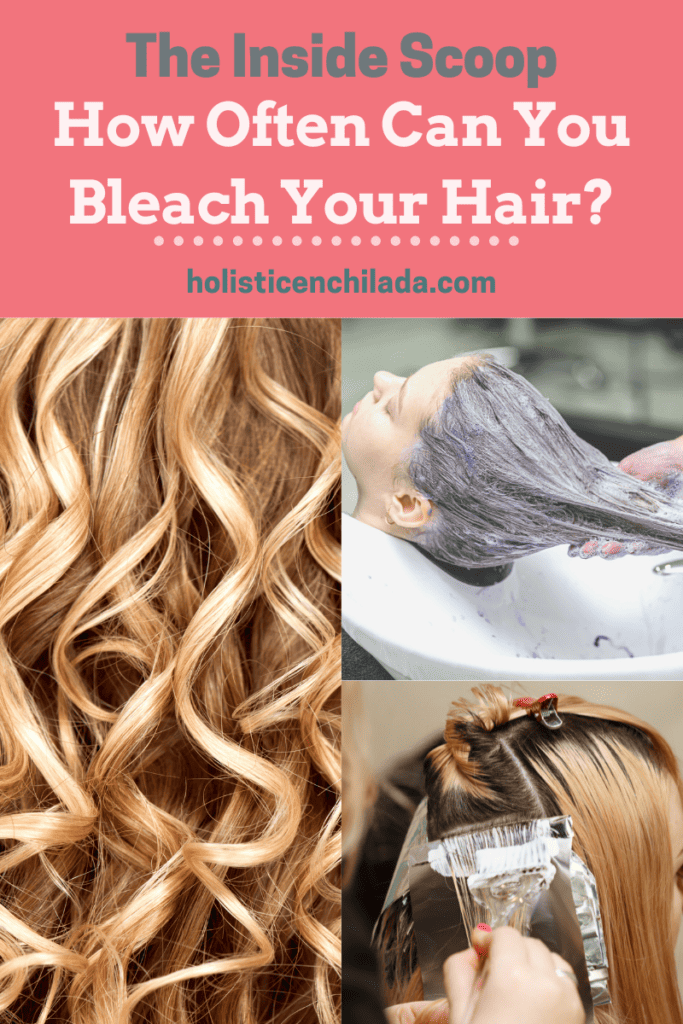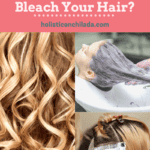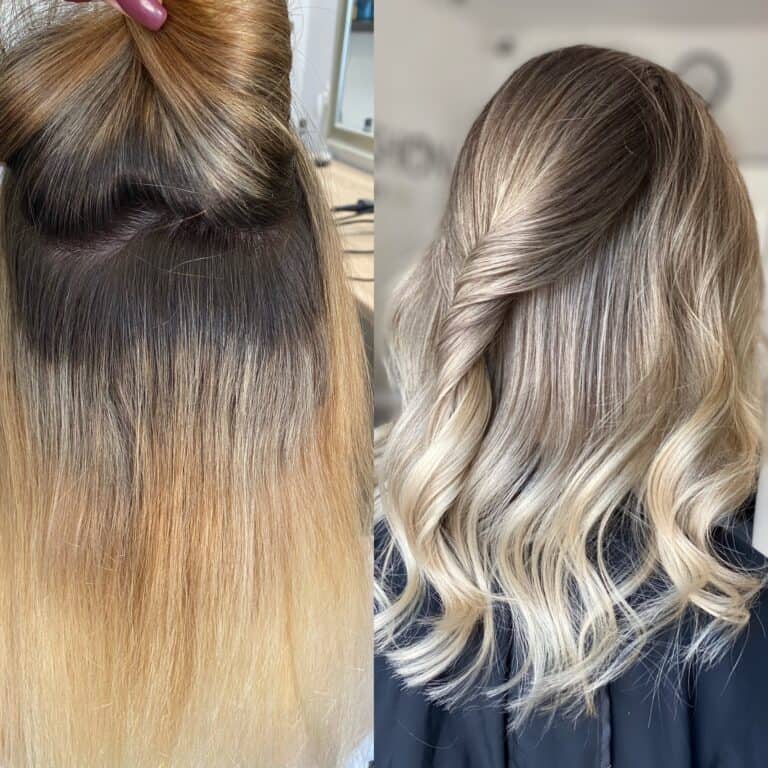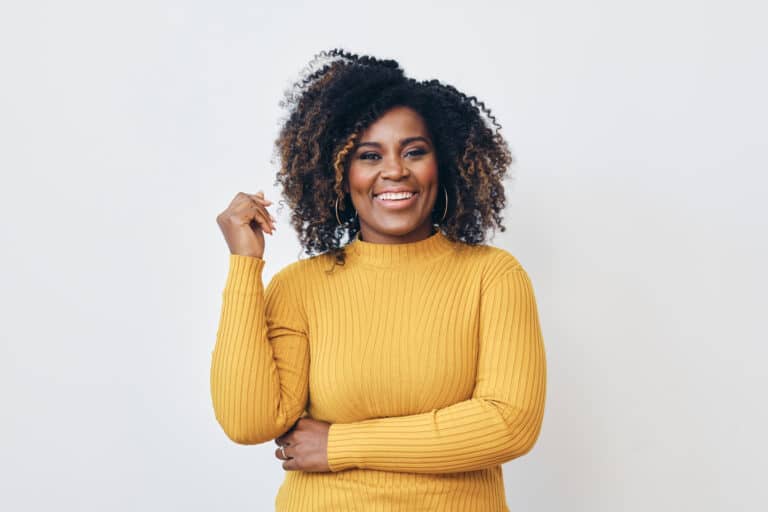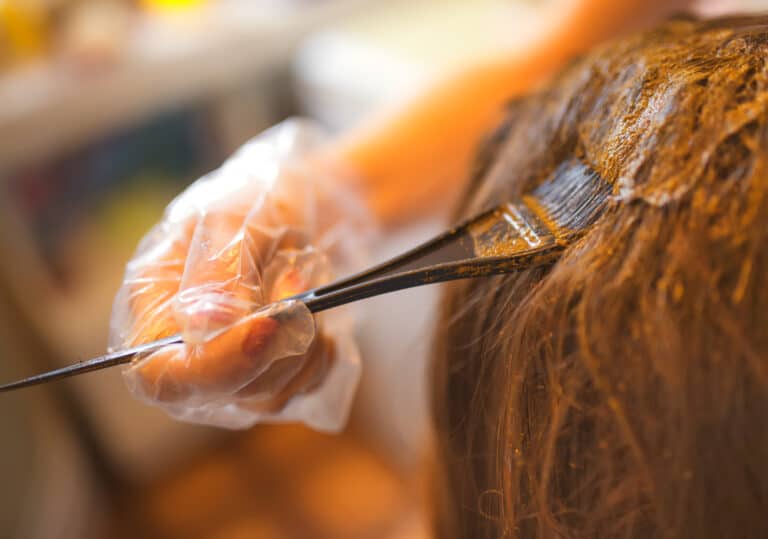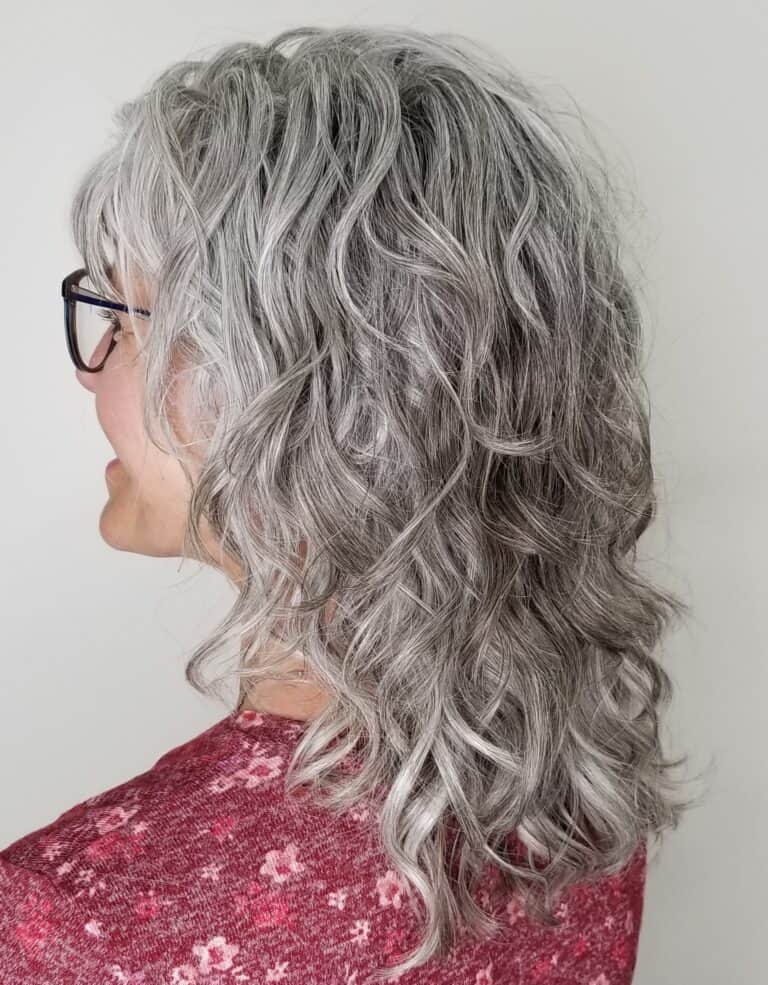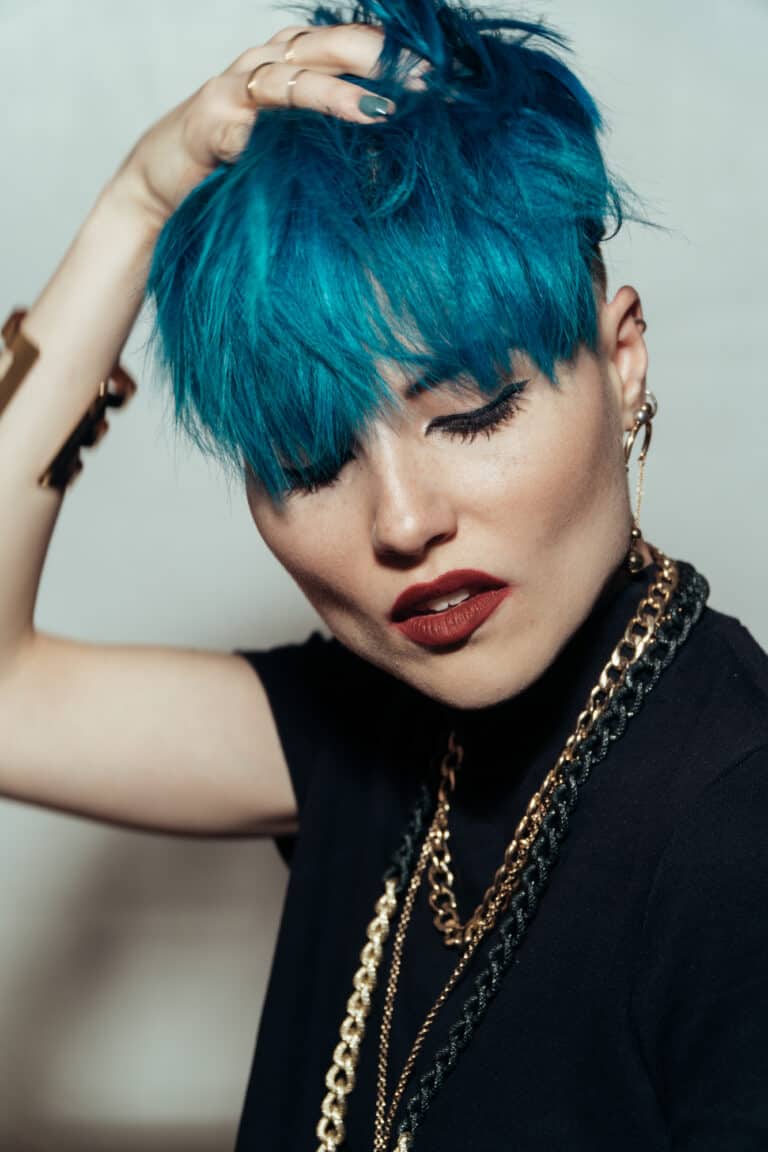The Inside Scoop- How Often Can You Bleach Your Hair?
This post may contain affiliate links, and I will earn a commission if you purchase through these links. Please read the disclosure policy for more details.
If you’ve tried using a home bleach kit and found the results aren’t quite what you wanted, you might be tempted to try and fix it with another application. But how often can you bleach your hair without causing serious hair damage?
This is a common problem, so our guide will look at some questions you might have, like ‘How long should you wait before bleaching your hair again?’ and ‘Can I bleach my hair twice in one day?’
We’ll take you step by step through safe hair bleaching, and let you know when it’s safe to dye unevenly bleached hair. And because after-care is so vital for bleached hair, we’ll also give you some great tips for caring for your blonde locks.
How Often Can You Bleach Your Hair – Bleaching Guidelines
Hair bleach contains oxidizing chemicals like ammonia and hydrogen peroxide which penetrate the hair follicle. This lightens the color of the strands, but these bleaching agents also damage your hair’s protein structure and lift the cuticle, so it loses moisture more easily.
This damage occurs every time you bleach your hair, which is why color experts recommend only bleaching your hair once every eight to ten weeks at most. If you can leave it longer between treatments, that’s even better.
If your hair is already damaged, you should stop bleaching treatments for several months while new, healthy hair grows. This will also prevent further damage and give you time to get your damaged hair healthy again. However, it’s better to avoid the damage caused by repeated bleaching.

Hair Bleaching Step by Step
First you need to be sure your hair is healthy enough to go through the bleaching process. If your hair shows signs of damage, like dryness, breakage, or frizz, it would be safer to visit a professional colorist for advice.
You should do a strand test before bleaching your hair to see how the chemicals affect your locks. If you want to achieve a platinum blonde color on dark hair or use a really bold hair dye like an electric shade of blue, you need to go through several stages of lightening dark hair. In this case, you should leave several weeks between bleaching sessions.
Applying extra virgin coconut oil to your hair two or three days before bleaching can help protect damaged hair from the harsh effects of hair bleach. And always read the product instructions carefully before you start to avoid any nasty surprises along the way!
Prepare to Bleach
First, you should gather everything you need to bleach your hair, including:
- Hair bleach or bleach powder and developer
- Toner
- Gloves
- An old T-shirt
- An old towel
- Hair clips
- A rat tail comb
- A non-metallic bowl and application brush
- Shampoo and conditioner
- A timer (you can use your phone!)
Cover your floor in case of splashes, and cover your shoulders with an old T-shirt or towel.
Mix Products
Once you’re ready to get started, mix your lightener (bleach or bleach powder) and developer together. Be sure to follow the instructions exactly.
Part Hair
Next, part your hair into four quadrants and then divide each into smaller segments.
Apply the Bleach
Use the brush to apply the hair bleach mixture, avoiding the last inch of your hair closest to your roots as the heat from your scalp will make the bleach process quicker.
Apply the bleach evenly and saturate each section of hair thoroughly. It’s best to start at the back of your head and move toward the front, and you’ll probably need some help with the back.
Once you’ve covered your hair, go back and start applying bleach to the roots
Leave to Process
Let the hair bleach process for the recommended time according to the instructions on the bleach bottle. How long you need to leave the bleach on your hair varies depending on your natural hair color and the results you’re looking for, but the bleaching process will probably take 20-45 minutes.
Remember that new hair growth will react differently to hair that’s had repeated bleaching, and be sure to set a timer!
Once your timer goes off, wipe a little bleach off a few strands with your old towel to check the results. You may be able to leave the bleach on a little longer if necessary but don’t exceed the packaging instructions.
After-Care
Shampoo your hair straight away, being sure to rinse thoroughly with lukewarm water. Follow it up with a hydrating conditioner, and then allow your hair to air dry before applying a toner.

Second Bleach Hair Prep
Ideally, you should leave several weeks between bleaching sessions. But sometimes your first bleaching session doesn’t give you the right color or you want to fix unevenly bleached hair.
Colorists generally recommend waiting at least two weeks before you bleach hair again. You should treat your previously bleached hair very gently and use protein- and moisture-rich products to replace the lost hydration and nutrients so that it’s in the best shape possible before you apply bleach again.
Fixing a Bleach Mess Up
Although the guidelines say that you can bleach your hair safely after a few weeks, hair varies in how much processing with harsh chemicals it can take. So here are a few ways to see if your locks are ready for more bleach.
Strand Testing
A strand test is where you snip a few strands from your underlayers and apply hair bleach to them. This shows you exactly how your hair will react to the bleach and what it will look like afterward. If your test strands feel too brittle or start to snap, you don’t want to apply bleach to the rest of your hair.
Even if your hair feels and looks like you can safely bleach it, it’s still better to wait a few more weeks, if possible. This will give your locks time to recover before the next bleaching session.
Assess Your Hair’s Condition
Before you apply bleach to hair that has already been bleached, you need to check your hair’s condition. Be honest with yourself because processed hair can only take so much damage before it starts to snap off or even fall out.
Bleach naturally dries your hair, and if it was already dry and damaged before you bleached it, a second session could be too risky.
Wait As Long As You Can
Applying hair bleach again too soon will cause more damage to your already fragile locks. So the longer you can leave between bleaching sessions, the better.
Unless your problem is urgent, it’s better to give your hair time to recover and explore alternative ways to correct your color.
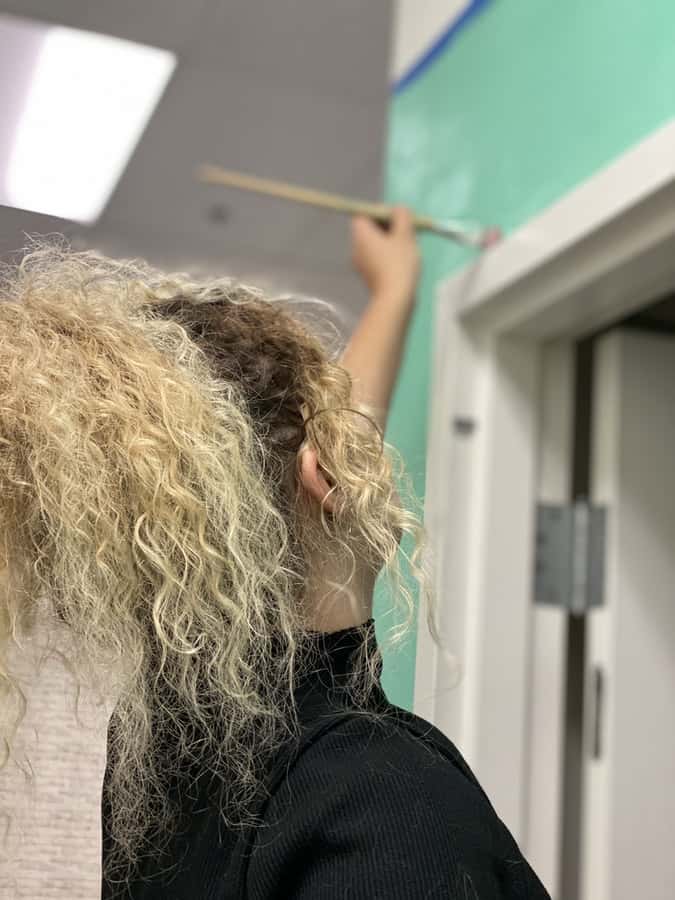
Bleach Alternatives
If your first bleach application left your hair with minor discoloration or undertones, you don’t need to reach for the bleach right away. These treatments could help to fix your hair color without causing as much damage as a second bleach application.
Color Shampoo
If you notice undertones showing through right after bleaching your hair, a purple or blue shampoo could help you achieve the desired color.
They work by canceling out the tones on the opposite side of the color wheel, so you need to use purple shampoo if you have yellow undertones or blue shampoo for orange tones.
Toner
A toner is a gentler way to color your hair that works on the same principle as a purple or blue shampoo. It won’t properly lighten your hair color because it stays on the outer layer of your hair shaft, but it will help to maintain your bleached color and remove unwanted undertones.
Although they aren’t as harsh as bleach or hair dye, it’s a good idea to use a deep conditioning product or mask afterward to hydrate and nourish your locks.
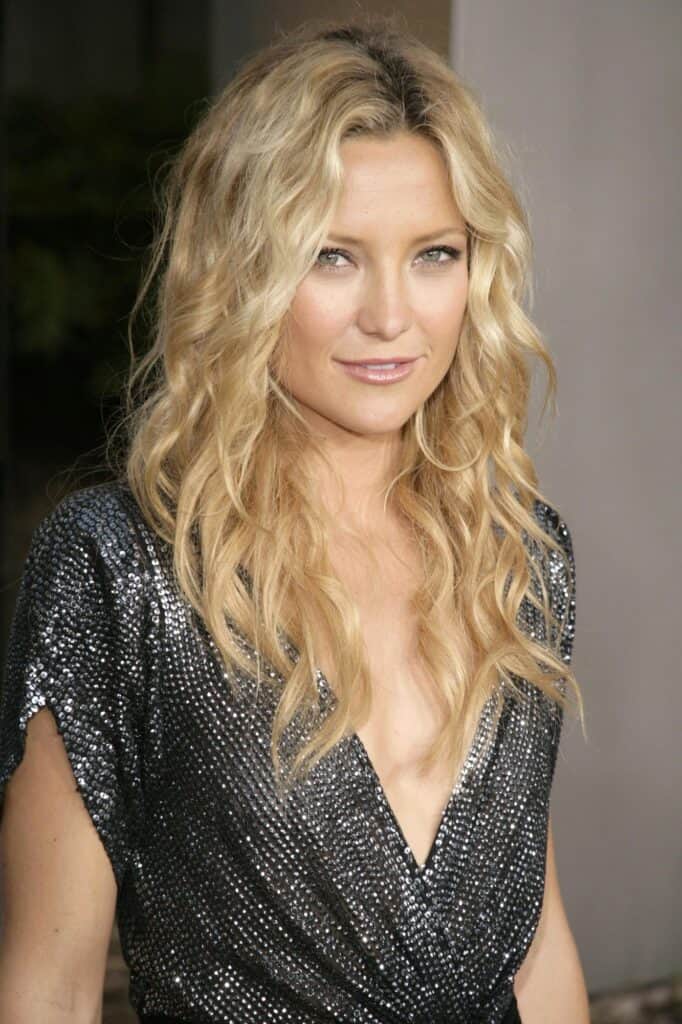
Maintaining Bleached Hair
Bleached locks need gentle care, and you’ll need to choose your hair care products carefully to avoid causing any extra damage.
But caring for bleached locks doesn’t need to be complicated. Here are a few simple steps to help you pamper your blonde tresses:
Alternate Shampoo and Conditioner
Dry, damaged blonde hair needs both moisture and protein, but not too much of either. So alternating between hair care products that deliver either protein or hydration is a great way to find the perfect balance for your locks.
It’s best to choose a sulfate-free shampoo and conditioner, as sulfates also have a drying effect.
Stretch Out Your Washes
Shampoo strips moisture from your locks and the friction caused by massaging in the shampoo can cause damage to weakened strands.
In the first few weeks after bleaching, your hair is at greatest risk of breakage and you should only shampoo your hair every three or four days. You can stretch out your washes using dry shampoo to freshen your hair in between wash days.
The Key to Conditioning
Good conditioning helps to reduce the risk of breakage and hair loss. Pamper your hair regularly with leave-in conditioners, weekly hot oil treatments or hair masks, and your regular in-shower conditioner.
Alternate Hair Treatments
Alternating between a protein mask and a moisturizing mask each week will rehydrate and strengthen your hair. Apply the mask to freshly washed hair and pop a shower cap on to help it absorb better, but follow the timing instructions carefully to avoid hygral fatigue.
Purple Shampoo or Toner
Bleached blonde hair is prone to brassiness, those unwanted orange or yellow undertones that often show up after bleaching. A purple toner or shampoo will neutralize the yellow tones in pale blonde hair, or you could use a blue toner for orange hair tones on hair that’s a darker color.
Bond Builder
A bond builder treatment helps to restore the protein bonds in your hair that the bleach has damaged, leaving your hair stronger, shinier, and less prone to breakage. You can ask your stylist for an Olaplex treatment at the salon or use Olaplex No. 3 at home.
Use Hair Oils
A good quality hair oil will nourish and moisturize your fragile strands. Avoid argan oil or olive oil, as these can stain pale blonde hair, and instead opt for a marula oil hair treatment which you can apply to the ends of your hair after washing.
Use Hair Gloss
A hair gloss treatment will smooth out your hair’s rough cuticles and give it a healthy-looking shine. Your stylist can apply a gloss treatment when you visit the salon, or you can look out for a DIY gloss treatment to use at home.
Use Quality Products With Multi-Tasking Formulas
A simple hair care strategy will minimize further damage to fragile hair. So look out for multi-tasking products like a detangling conditioner that also acts as a heat protectant, like Eva NYC Mane Magic 10-in-1 Primer.
Regular Haircuts
Regular haircuts will help to remove split ends before they can work their way up through the hair strands. It’s a good idea to have your hair cut straight after using bleach or hair dye to seal the ends, then schedule a trim every six to eight weeks.
Practice Careful Styling Habits
Bleached hair needs to be handled gently, so take care when brushing or styling your hair.
Detangling gently from the ends up to the roots will help avoid breakage, and you should avoid wearing tight ponytails or other styles, as it can cause breakage around your hairline.
Check your water hardness
The chlorine and mineral deposits in hard water can leave blonde hair dull and brass. If you see calcium building up around your shower head, it’s a good idea to fit a shower head filter to remove the minerals from the water before they build up on your locks.
Silk Pillowcase and Microfiber/T-Shirt Towels
A satin or silk pillowcase is an excellent investment for your hair. They don’t draw moisture out of your strands like a cotton pillowcase will, and they help to reduce tangles, knots, and breakage.
Everyone should have one of these! They prevent wrinkles, frizz, tangles, and feel luxurious. A basic necessity for anyone with curly hair but also skincare lovers.
And microfiber towels are fantastic for all hair types but especially for delicate bleached strands. Remember to gently squeeze or blot the water from your locks rather than rubbing.
Reduce frizz and speed up drying time. Every curly girl should have one. Use code HOLISTICENCHILADA to save 15% at teeowels.com.
Avoid Additional Damage With Heat
Finally, avoid heated styling tools like curling irons and blow dryers. Bleached locks are already dry, porous, and vulnerable to damage, and adding heat will cause even more damage.
Air drying is the safest option, but if you can’t live without your hot tools, apply a good heat protectant first.
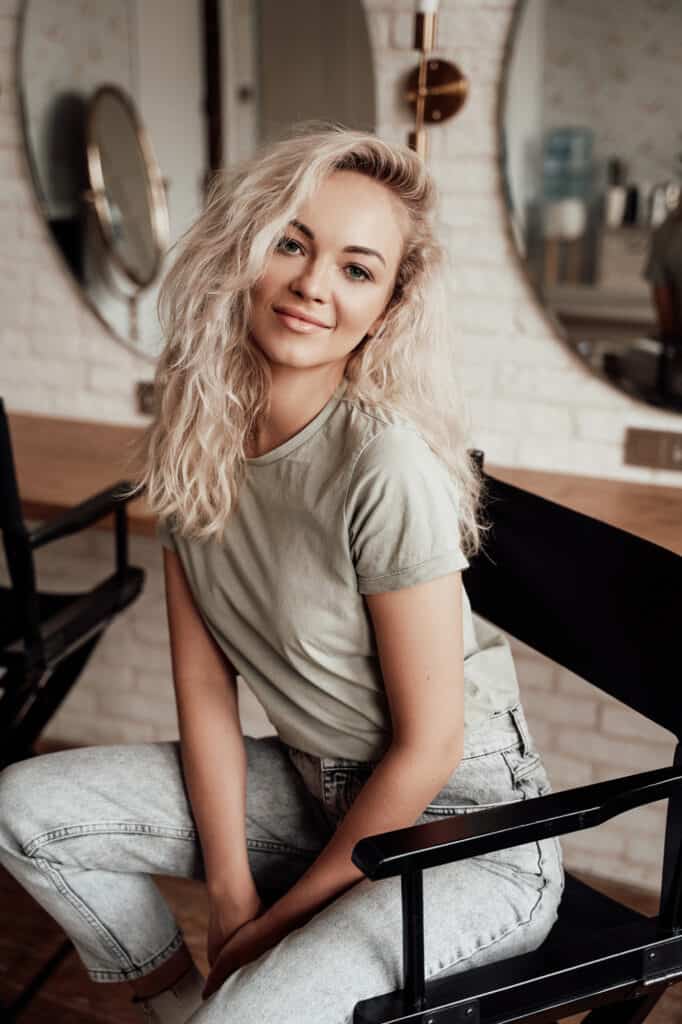
FAQs
If you still have questions about bleaching your hair, these answers may help:
What Effects Can Bleaching Have On Your Hair?
Hair bleach lifts the outer cuticle of your hair follicle. If you bleach your hair repeatedly, the cuticle may stay permanently lifted, and your hair will lose moisture very quickly. This will make it dry, brittle, and prone to split ends and breakage.
Hair bleach also makes the strands more porous, leaving them at greater risk of chemical and heat damage. It also damages the protein structure of your hair strands.
Every time you bleach your hair, you will cause further damage to the strands, so it’s important to avoid frequent bleaching.
Can You Bleach Your Hair Twice in One Day?
The one hair bleaching rule you must never break is this: never bleach your hair twice in one day, because you risk causing serious damage or even hair loss.
So even if bleaching hair twice in 24 hours is tempting, try to take some time and let your locks recover before you re bleach them.
How Long Should You Wait to Bleach Your Hair Again?
Even if you’re desperate to fix your bleached hair, you should still wait a few weeks before you bleach it again. The absolute minimum is two weeks; ideally, you should wait four or even six weeks.
How Often Can You Bleach Your Hair – The Bottom Line
Hair bleaching is a quick way to update your look, but hair bleaching agents like hydrogen peroxide can make your hair dry and brittle, and the results can sometimes be unreliable.
So if you’re considering bleaching your hair multiple times, it’s essential to give your processed hair time to recover before further applications. Waiting four to six weeks or more before your next bleaching session will allow you to nourish and moisturize your locks so that damage is kept to a minimum.
Gentle after-care with the right products will also help to keep your new blonde tresses looking great!
Want to remember this? Save The Inside Scoop- How Often Can You Bleach Your Hair? to your favorite Pinterest board!
